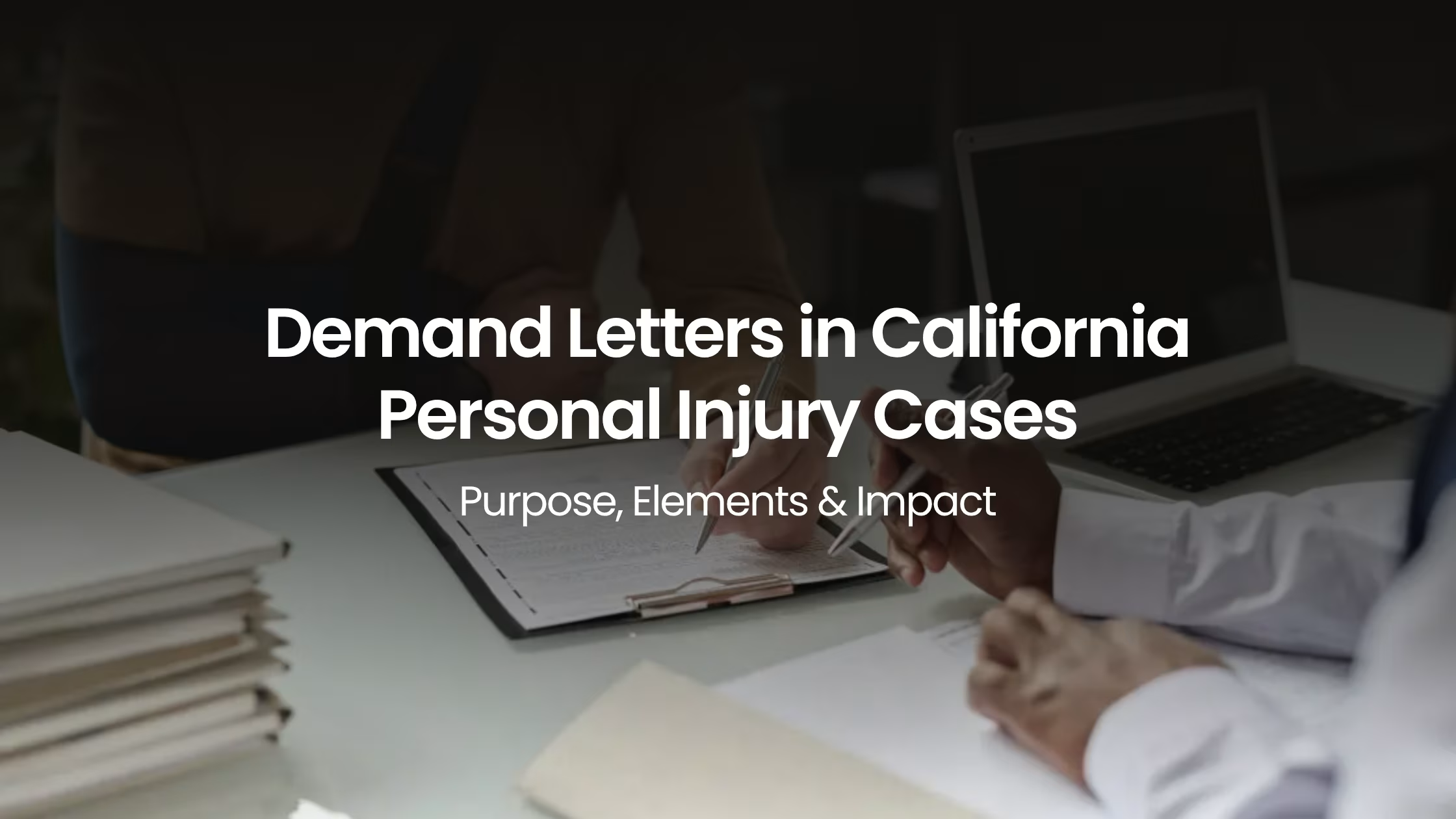When pursuing compensation after an accident, one critical step often determines the trajectory of your settlement, the demand letter. In California personal injury law, a properly drafted demand letter can transform an injury claim from negotiation to resolution. It’s not just a letter, it's your case presented in miniature: the facts, the law, and the price of your recovery.
This guide offers a full breakdown of what demand letters are, what they must include, and why they exert enormous influence in personal injury and even wrongful death lawsuit claims.
What Is a Demand Letter?
A demand letter is a formal legal document sent by an injured party (or their attorney) to the at-fault person’s insurance company. It summarizes the facts, evidence, injuries, and damages, while demanding a specific settlement amount. California law treats this step as a vital pre-litigation phase.
Attorney-authored demand letters are particularly persuasive, they show preparedness, professionalism, and readiness for trial. A strong letter reflects that the injured party has credible representation, significantly increasing the likelihood of early settlement.
Why Demand Letters Matter in California Personal Injury Law
Under California Code of Civil Procedure and insurance law precedents, demand letters often set the stage for good-faith negotiations. When properly framed within policy limits, they can also expose insurers to liability for bad faith if they fail to settle.
Purpose of a Demand Letter:
- To establish the basis for liability.
- To quantify total damages: medical bills, lost income, and pain and suffering.
- To demonstrate seriousness before filing a lawsuit.
- To prompt negotiation and settlement, preventing costly litigation.
This process applies across numerous injury categories like automobile accidents, premises liability, and especially complex wrongful death suits, where claim value and emotional toll are high.
Key Elements of a California Demand Letter
A sample excerpt from an authentic California demand letter often reads:
“Based on the evidence enclosed—medical expenses totaling $44,850, therapy costs, and eight weeks of lost wages totaling $10,000—I am demanding a settlement of $120,000 in resolution of this matter. Please respond by June 15, 2025, or I will proceed to litigation.”
Demand Letters and Insurance Negotiations
Insurance carriers rely on the demand letter as their first glimpse of your case value. Many settlements are reached without a formal lawsuit because an effective demand letter outlines every element an insurer needs to evaluate.
However, insurers often counter with lowball offers or delay tactics. That’s why experienced counsel and not automated templates should handle these letters. A lawyer wrongful death case or catastrophic injury claim requires legal precision, citing precedents and case law to prevent underpayment.
Legal precedence, such as Croskey v. State Farm (1994), confirmed insurers must act reasonably upon receiving a justified demand. A clear demand establishes this obligation.
Case Studies: Demand Letters That Made a Difference
Lesson: Each successful settlement followed a meticulously drafted letter focused on verifiable damages and clear liability theory.
Demand Letters in Wrongful Death Cases
Demand letters in wrongful death lawsuit situations require particular sensitivity. Beyond financial compensation, they must reflect the profound human loss behind the case. Using supportive documentation such as life insurance, dependents’ details, and emotional statements can help demonstrate the scope of harm.
A strong wrongful death demand typically includes:
- Description of deceased’s life, role, and dependents.
- Medical and autopsy reports linking death to the negligent act.
- Financial projections of future support lost to dependents.
- Citation of wrongful death statutes under California Code of Civil Procedure § 377.60.
An experienced wrongful death attorney ensures the tone remains both factual and compassionate, respecting the emotional weight while maintaining legal precision.
The Legal Weight of a Demand Letter
While not required by law, demand letters carry powerful evidentiary significance. Courts recognize them as evidence of the plaintiff's willingness to settle and the insurer’s response (or lack thereof) can later prove bad faith. Under California Evidence Code, settlement discussions remain inadmissible, protecting your demand number from use at trial.
This safe negotiation zone encourages open dialogue. However, an ignored or poorly received demand letter signals readiness for escalation into formal litigation, a strong tactical position for the plaintiff.
Common Mistakes That Undermine a Demand Letter
- Inaccurate or exaggerated damages.
- Missing supporting documents.
- Unclear liability language.
- Unreasonable or arbitrary settlement amounts.
- Tone that’s too emotional rather than factual.
Avoid these pitfalls by having an experienced legal team draft and verify every detail before submission.
Timeline: What Happens After Sending a Demand Letter
Preparedness makes each step smoother and positions you for maximum compensation.
Attorney Perspective: Why Experience Matters
At Ladva Law, our approach to personal injury and lawyer wrongful death case work goes beyond paperwork, our trial background demands precision. With over 25 years of courtroom experience, our firm prepares every case as if it’s going to trial. This strength sends a powerful signal to insurance companies: we are ready to prove it before a jury if they refuse fairness.
Our attorneys represent clients across California in all types of injury and wrongful death cases, providing strategic, compassionate, and relentless advocacy.
Tips for a Persuasive Demand Letter
- Stay Professional: Use factual, concise, and respectful language.
- Be Detailed: Include all medical records and photos.
- Support Non-Economic Damages: Use expert or therapist testimonials.
- Set a Deadline: 30 days is standard but assertive.
- Engage an Attorney: Skilled drafting can greatly increase settlement values.
Let Ladva Law Draft Your Demand with Power and Purpose
Demand letters are more than paperwork, they are your voice demanding justice. Whether it’s a personal injury or a wrongful death suit, your message to the insurance company must be strong, supported, and strategic.
Contact Ladva Law today for a free consultation. Our San Francisco-based team serves clients across California, ensuring every letter, negotiation, and courtroom appearance is guided by decades of real trial experience.
Your demand for fairness deserves a trial lawyer’s power behind it choose Ladva Law, and make your first letter your strongest move.






